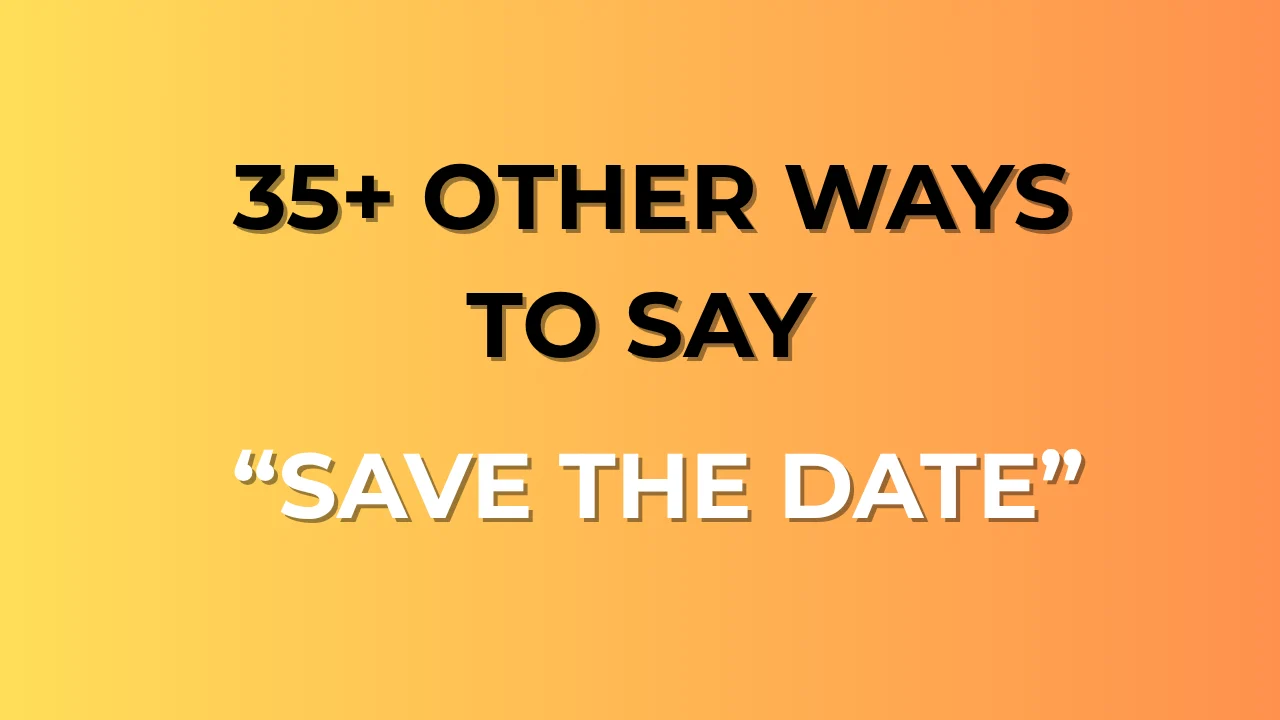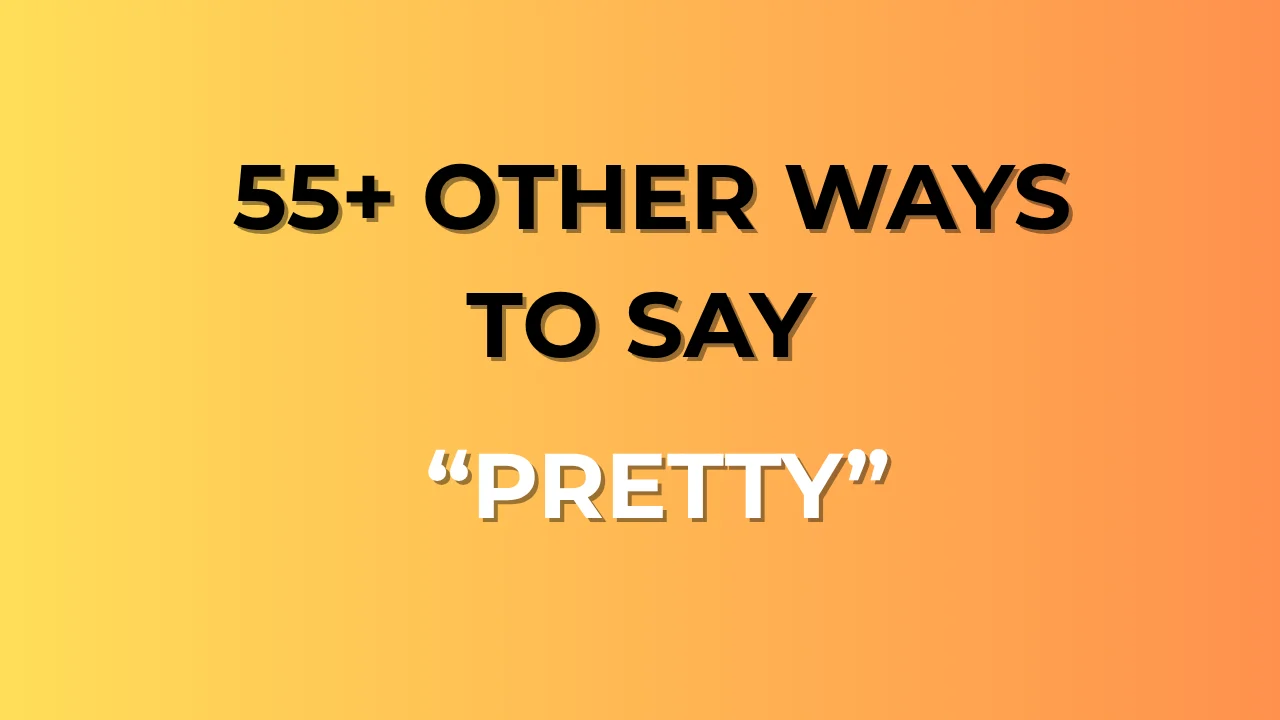The phrase “as you can see” is one of the most common expressions in English writing and speech. It’s often used to draw attention to evidence, examples, or visuals that make a point clear. However, while it’s effective, using it too often can make your writing sound repetitive or overly casual.
Finding fresh, polished alternatives helps you sound more confident, articulate, and professional — especially in presentations, essays, reports, and emails. Whether you’re addressing colleagues, readers, or an audience, choosing the right phrasing ensures your tone fits the context.
In this guide, we’ll explore 35+ natural, professional, and creative alternatives to “as you can see,” complete with meanings, tones, and real examples to help you use them smoothly in your writing and communication.
What Does “As You Can See” Mean?
The phrase “as you can see” is used to highlight information that’s already visible, obvious, or supported by evidence. It signals that the listener or reader should notice or understand something based on the context.
Example: As you can see, our sales have increased significantly this quarter.
The tone is usually friendly, explanatory, or persuasive, depending on how it’s used. It’s common in presentations, essays, reports, and instructional communication.
When to Use It
You can use “as you can see” when you:
- Refer to data, charts, or visuals in presentations.
- Emphasize facts or examples that support your argument.
- Guide your audience through an explanation.
Examples:
- As you can see, the new design improves readability.
- As you can see in the graph, customer satisfaction has grown steadily.
While useful, it can feel repetitive in formal writing or academic papers — which is why substituting it with context-appropriate alternatives can enhance clarity and tone.
Is It Polite or Professional?
Yes, “as you can see” is neutral and polite, but it can sound slightly informal in academic or business contexts. Overusing it may seem condescending, as it assumes the reader’s observation.
Replacing it with refined alternatives can make your tone more objective, confident, and professional, while still maintaining a natural flow.
35+ Other Ways to Say “As You Can See”
1. As Evidenced By
Meaning: Indicates proof or support for a statement.
Tone: Formal and factual.
Example: The company’s growth is strong, as evidenced by the latest revenue figures.
Explanation: Excellent for academic or business reports.
2. As Demonstrated By
Meaning: Points to something that illustrates your claim.
Tone: Formal and persuasive.
Example: As demonstrated by our performance, innovation drives results.
Purpose: Ideal for presentations and executive summaries.
3. As Illustrated By
Meaning: Refers to visual examples or data.
Tone: Academic and explanatory.
Example: As illustrated by the chart, market demand continues to grow.
Purpose: Perfect for research, charts, or diagrams.
4. As Shown In
Meaning: Indicates reference to a source or evidence.
Tone: Professional and neutral.
Example: As shown in Table 2, profits doubled in Q2.
Purpose: Common in reports and technical documents.
5. As Indicated By
Meaning: Refers to signs, signals, or results.
Tone: Formal and precise.
Example: As indicated by the survey, customer satisfaction has improved.
Purpose: Excellent for analytical writing.
6. As Displayed In
Meaning: Refers to visual representation.
Tone: Technical and professional.
Example: As displayed in the graph, engagement rates are rising.
Purpose: Ideal for slide decks and reports.
7. As Reflected In
Meaning: Shows a situation mirrored in data or behavior.
Tone: Professional and objective.
Example: Employee commitment is high, as reflected in retention numbers.
Purpose: Adds depth to analytical writing.
8. As Depicted In
Meaning: Refers to visuals, images, or narratives.
Tone: Artistic and formal.
Example: As depicted in the figure, migration patterns are shifting.
Purpose: Common in academic or visual analysis writing.
9. As Observed In
Meaning: Based on findings or personal observation.
Tone: Academic and factual.
Example: As observed in the study, climate change impacts are accelerating.
Purpose: Great for research and scholarly writing.
10. As Pointed Out Earlier
Meaning: Refers to a previously stated idea.
Tone: Neutral and coherent.
Example: As pointed out earlier, consistency builds trust.
Purpose: Perfect for essays or arguments.
11. As Highlighted By
Meaning: Emphasizes key data or facts.
Tone: Professional and emphatic.
Example: As highlighted by our report, user activity has doubled.
Purpose: Adds focus in presentations.
12. As Noted In
Meaning: Cites a source or observation.
Tone: Formal and precise.
Example: As noted in the annual review, progress remains steady.
Purpose: Ideal for referencing research or reports.
13. As Evident From
Meaning: Shows clarity through proof or results.
Tone: Objective and formal.
Example: As evident from the data, efficiency has improved.
Purpose: Works in essays, reports, or presentations.
14. It’s Clear That
Meaning: Indicates obviousness or clarity.
Tone: Neutral and confident.
Example: It’s clear that teamwork enhances performance.
Purpose: Effective for persuasive writing.
15. It’s Apparent That
Meaning: Expresses an observation based on evidence.
Tone: Formal and assertive.
Example: It’s apparent that our strategy is working.
Purpose: Great for analytical or evaluative writing.
16. It’s Evident That
Meaning: Confirms a visible or proven fact.
Tone: Professional and firm.
Example: It’s evident that the new policy has improved engagement.
Purpose: Adds authority to your statement.
17. Clearly
Meaning: Highlights obvious evidence.
Tone: Direct and confident.
Example: Clearly, the results exceed expectations.
Purpose: Best for persuasive communication.
18. Obviously
Meaning: Suggests something is self-explanatory.
Tone: Casual and assertive.
Example: Obviously, these findings align with our goals.
Purpose: Good for conversational or informal writing.
19. Evidently
Meaning: Based on visible proof or reason.
Tone: Formal and analytical.
Example: Evidently, the new approach has improved results.
Purpose: Ideal for academic or factual writing.
20. As the Data Shows
Meaning: Cites factual or statistical support.
Tone: Analytical and credible.
Example: As the data shows, market interest is growing steadily.
Purpose: Perfect for business and research reports.
21. From This, We Can See That
Meaning: Draws a logical conclusion from evidence.
Tone: Explanatory and educational.
Example: From this, we can see that customer loyalty depends on service quality.
Purpose: Great for teaching or analytical discussions.
22. From the Evidence Presented
Meaning: Concludes from previously discussed proof.
Tone: Academic and structured.
Example: From the evidence presented, the hypothesis is supported.
Purpose: Ideal for essays and reports.
23. From These Results
Meaning: Summarizes findings.
Tone: Scientific and objective.
Example: From these results, it’s clear that the intervention was effective.
Purpose: Works in research and technical documents.
24. The Results Show That
Meaning: Introduces a conclusion based on data.
Tone: Professional and precise.
Example: The results show that performance has increased by 25%.
Purpose: Common in reports and studies.
25. The Data Suggests That
Meaning: Indicates an inference from evidence.
Tone: Analytical and cautious.
Example: The data suggests that user behavior is changing.
Purpose: Ideal for analytical and academic tone.
26. This Demonstrates That
Meaning: Points to something that proves a claim.
Tone: Objective and persuasive.
Example: This demonstrates that innovation drives success.
Purpose: Excellent for professional writing.
27. This Indicates That
Meaning: Shows or implies something based on evidence.
Tone: Formal and precise.
Example: This indicates that customer engagement has improved.
Purpose: Works well in analytical writing.
28. This Shows That
Meaning: Simple, clear conclusion.
Tone: Neutral and concise.
Example: This shows that collaboration leads to better outcomes.
Purpose: Good for general-purpose writing.
29. This Reveals That
Meaning: Uncovers a result or insight.
Tone: Analytical and professional.
Example: This reveals that our new process is highly efficient.
Purpose: Suitable for research or reports.
30. This Suggests That
Meaning: Implies a conclusion based on partial evidence.
Tone: Cautious and thoughtful.
Example: This suggests that customer behavior is evolving.
Purpose: Excellent for academic tone.
31. It Can Be Seen That
Meaning: Indicates observable evidence.
Tone: Formal and neutral.
Example: It can be seen that productivity has improved.
Purpose: Great for essays and data analysis.
32. It’s Noticeable That
Meaning: Draws attention to something visible.
Tone: Polite and descriptive.
Example: It’s noticeable that new users prefer mobile platforms.
Purpose: Smooth for reports or observations.
33. One Can Observe That
Meaning: States an observation objectively.
Tone: Academic and formal.
Example: One can observe that growth patterns are consistent.
Purpose: Excellent for research or essays.
34. It Appears That
Meaning: Introduces an observation with cautious tone.
Tone: Neutral and analytical.
Example: It appears that engagement rates are stabilizing.
Purpose: Ideal for data interpretation.
35. The Evidence Clearly Shows
Meaning: Strongly supports a conclusion.
Tone: Formal and assertive.
Example: The evidence clearly shows an upward trend in sales.
Purpose: Effective for persuasive and data-driven writing.
Conclusion
While “as you can see” is a helpful phrase, relying on it too often can weaken your writing’s precision. Using varied and professional alternatives not only refines your tone but also strengthens your credibility.
Whether you’re preparing a report, giving a presentation, or writing an academic essay, choosing the right phrase ensures your message feels clear, confident, and tailored to your audience.
Experiment with these expressions to make your communication more dynamic and professional.



